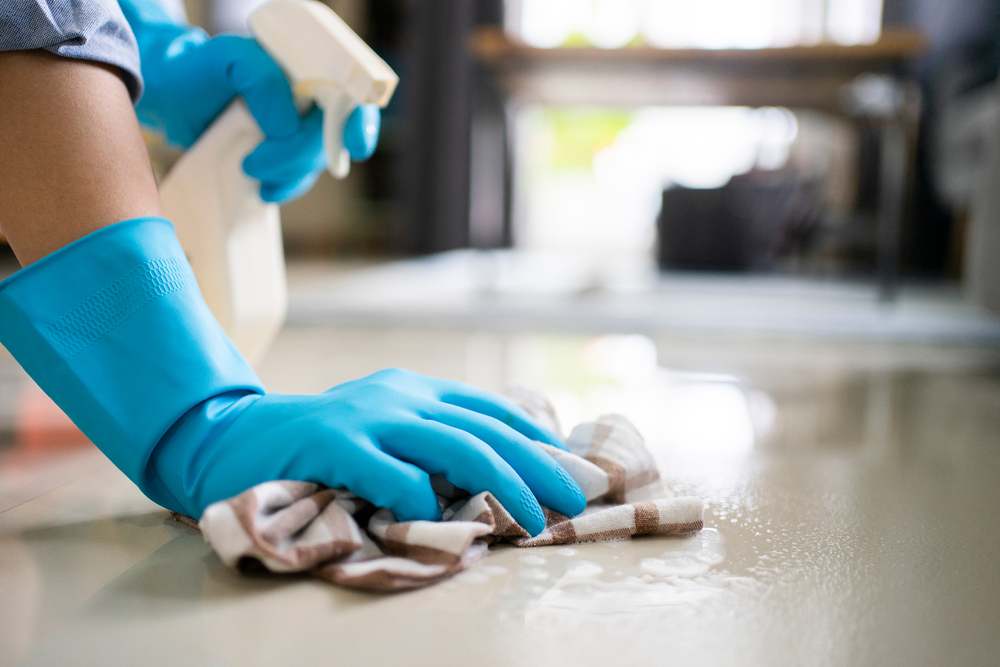As more facilities welcome employees and building occupants back at increased or full capacity, facility managers must remember that the public’s heightened awareness around cleanliness is here to stay. Knowing the role cleaning plays in helping to reduce the spread of illness, it is imperative that facility managers enhance their cleaning protocols to promote a culture of cleanliness. Moving forward, cleanliness protocols will likely impact employee retention, satisfaction and productivity as employees want to be reassured that their facility is keeping them as safe as possible.
Cleaning Up Old Habits: Instilling a Culture of Cleanliness
Many facilities will need to rethink their approach to cleaning as cleanliness continues to stay top of mind. A few considerations facility managers must take include:
Scheduling daytime cleaning.
A recent national survey found that nearly 90% of Americans want proof workplaces are being cleaned and sanitized regularly even after they have been vaccinated. Scheduling daytime cleaning reassures employees that
high-traffic areas and high-touch surfaces are being cleaned regularly. Making cleaning more visible stresses a facility’s commitment to cleanliness and builds trust with employees.
Additionally, a daytime cleaning schedule also supports the happiness and wellbeing of cleaning staff. This can improve productivity, cleaning performance and reduce turnover rates. Hence, shifting to a daytime schedule supports the bottom line and helps to foster a culture of cleanliness.
Cleaning for health and appearance.
Cleaning for appearance remains critical but facility managers must make cleaning for health a priority. It’s vital to implement cleaning solutions and equipment that can eliminate pathogens of concern, but are also sustainable. Sustainable cleaning products promote good indoor air quality (IAQ) and reduces cleaning’s impact on the environment, which further supports public health. In fact, a recent Harris Poll found that 1 in 2 U.S. adults believe buildings should follow sustainable cleaning practices.
One way to clean for health and appearance is to implement an on-site generation (OSG) system. OSG systems produce two electrochemically-activated solutions (ECAS) with just salt, water and electricity. ECAS are as effective as other cleaning products, but don’t use harsh ingredients or volatile organic compound (VOC) emitting chemicals. Similarly, verify if your service provider’s cleaning protocols are Green Seal® certified. Cleaning programs are required to go through a rigorous process to confirm whether they incorporate effective, sustainable cleaning and disinfecting procedures and equipment
Promoting good hand hygiene.
Proper hand washing is a pillar of cleanliness and infection prevention. In addition to cleaning protocols, it’s pivotal for facilities to promote proper hand washing techniques. Consider installing signs in restrooms that serve as a reminder to building occupants of the facility’s standards and commitment to cleanliness. Be sure that there’s an adequate supply of sanitizer and hand soap regularly.
Prioritizing training.
Training supports cleaning performance, safety and the continued success of cleaning professionals. It not only allows employees to feel more comfortable with the products and equipment they’re using, but also teaches them how to reduce waste and be more sustainable. Training improves cleaning consistency, which takes away from having to reclean or use more resources needed. It should be ongoing, starting with the onboarding process and continuing throughout their tenure.
Long-term Change for Long-term Results
The public’s perceptions of clean have been forever altered as a result of the pandemic, and facilities will need to adapt. As we grow closer towards a post-pandemic world, trust will be hard to earn and even easier to burn. Facility manager that are mindful of employees’ concerns and willing to work towards a culture of cleanliness will be better prepared for the future.
Do you need help bringing a culture of cleanliness to your facility? Contact us here to learn more about our offerings, and follow us on LinkedIn and Facebook for updates.



